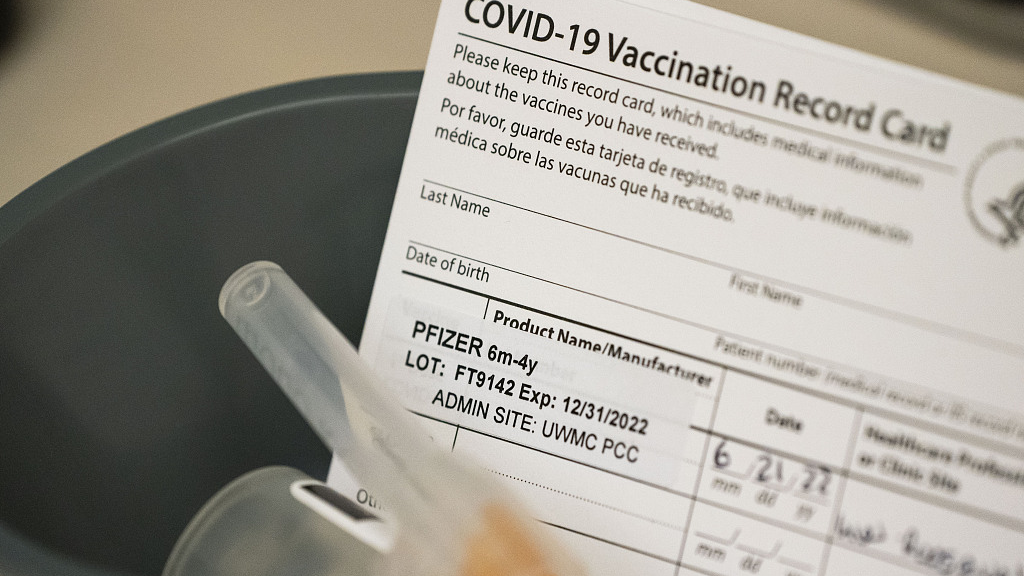
A dose of the Pfizer Covid-19 vaccine and a vaccination record card await a pediatric patient in Seattle, Washington, the U.S., on June 21, 2022. /CFP
A dose of the Pfizer Covid-19 vaccine and a vaccination record card await a pediatric patient in Seattle, Washington, the U.S., on June 21, 2022. /CFP
Two Omicron variants, BQ.1 and BQ.1.1, have accounted for over a quarter of coronavirus variants in the United States, according to the latest statistics released by the country's Centers for Disease Control and Prevention (CDC).
The two strains, descendants of Omicron's BA.5 subvariant, which is the dominant form of the coronavirus in the U.S., are increasing in their share of cases recently.
Compared with the percentage of 1.7 and 0.9 on November 1, the BQ.1 and closely related BQ.1.1 have enjoyed an additional growth advantage, accounting for 14 and 13.1 percent, respectively as of last Saturday.
The BQ.1 "warrants close monitoring," said the World Health Organization last Thursday in a statement on Omicron sub-lineages, since the subvariant is "showing a significant growth advantage over other circulating Omicron sub-lineages in many settings, including Europe and the US."
"It is likely that these additional mutations have conferred an immune escape advantage," and therefore "a higher reinfection risk is a possibility that needs further investigation," the statement added.
"We ought to prepare for the possibility of another winter surge. We want to be realistic because every COVID surge brings additional risk," said the Los Angeles Times on Tuesday, citing Barbara Ferrer, public health director of Los Angeles County, California.
According to the CDC, a total of 68.4 percent of the U.S. population has completed primary series of vaccination as of October 27.